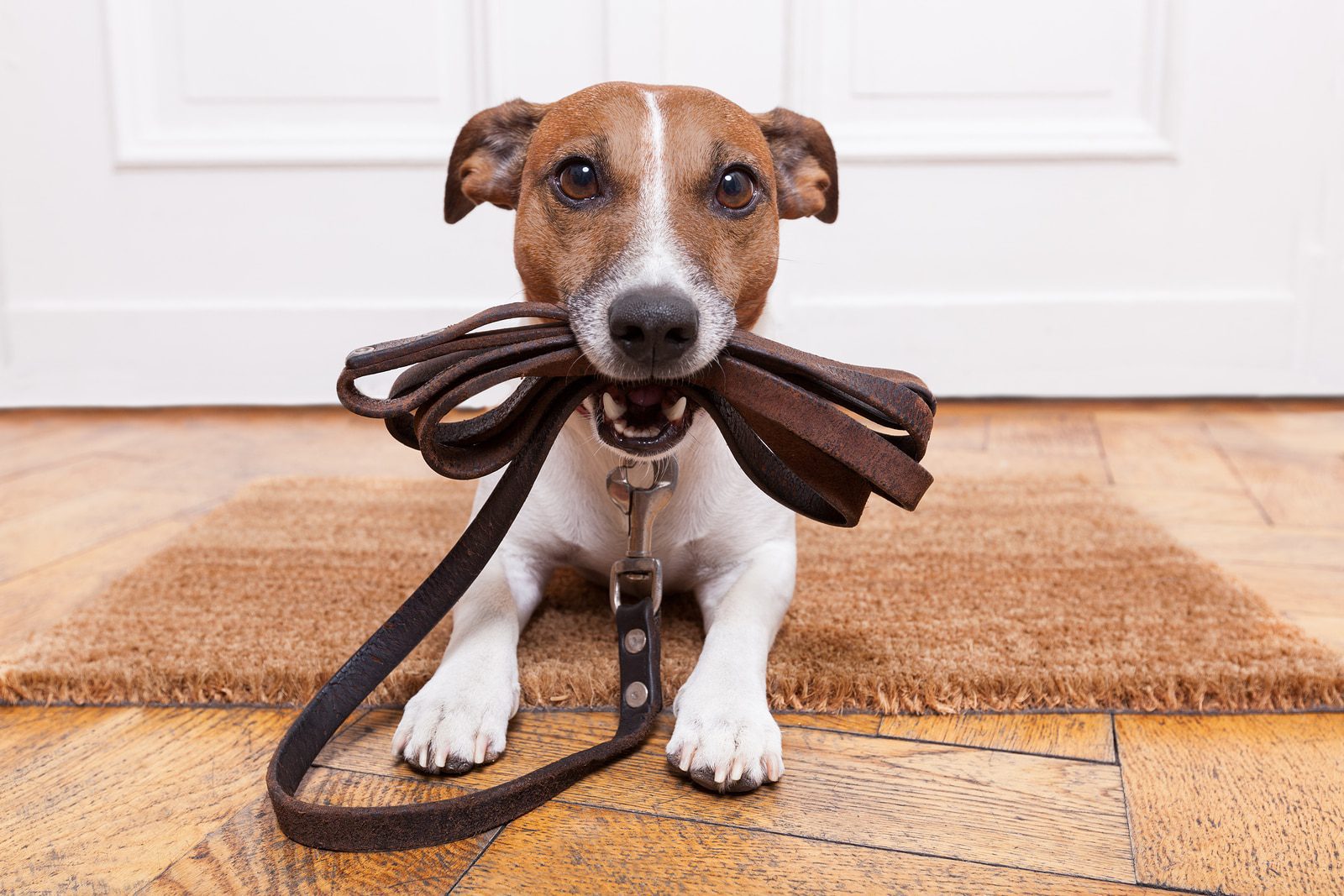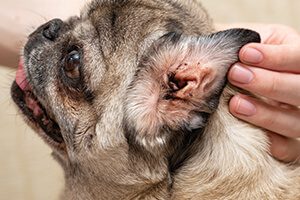
Tès entèlijans ak IQ pou chen: baz la syans
How smart is your dog? If the dog knows enough not to ruin the carpet and generally not give you problems, you may think that he is quite smart, and do not even think about testing his intelligence. A canine intelligence test can give you an idea of his learning and problem-solving abilities. We will tell you both about canine intelligence and how to conduct an IQ test for your pet.
Syans nan entèlijans chen
Although your dog’s intelligence level doesn’t affect how much you love him, for those who are just about to get a pet, the results of his intelligence test can help determine the characteristics of temperament and ability to train. Not only can this help future owners choose the right dog, but it will also give them an idea of what to expect from them.
However, Today points out, it’s important to keep in mind that when it comes to relationships between owners and their pets, canine intelligence is highly subjective. Your dog may not excel at logically solving certain problems, but it may have other talents that will still convince you that he or she is a genius. Also, obedience is not necessarily a sign of intelligence.
On the other hand, some scientists believe that the study of canine intelligence may provide a deeper understanding of human intelligence. A group of British researchers are working on a reliable IQ test for dogs that they hope will make it easier to study the link between intelligence and health, says Scientific American. Although canine intelligence is defined in the same way that it is defined, dogs are not affected by some of the lifestyle aspects that interfere with assessing IQ in humans. By testing the IQ of a large number of border collies living in the same conditions on farms, the researchers found that even within the same breed, the intelligence of animals can vary widely. The researchers hope that by developing an accurate test to measure the intelligence of dogs, they will be able to explore the relationship between IQ, overall health, and life expectancy without having to take into account additional variables that prevent similar studies in humans.
Different Types of Intelligence in Dogs
Do dogs have different types of intelligence? Today states that there are two main types of intelligence in dogs. The first type is “instinctive” intelligence, which is responsible for the natural abilities inherent in a given breed or a certain type of dog breeds. It is this type of intelligence that is responsible for the fact that terriers are generally good at hunting small animals, bloodhounds can find things by smell, and border collies are excellent herders.
The other type is “adaptive” intelligence, which is responsible for the dog’s ability to learn. This type includes learning to perform certain tasks, socialization and understanding of speech commands. One type of intelligence in an animal may be more developed than another. But just as one person who can play a Mozart concerto on the piano is no better or worse than a person who can calculate the square root of pi without a calculator, so a dog with higher adaptive intelligence is no better or worse than one that exhibits more ability in the field of instinctive intelligence. Therefore, when taking an IQ test on your dog, keep in mind that he may have developed natural talents and skills that are not included in the test.
Tès IQ chen
 Below are some of the tasks you can do with your dog to test their IQ. These tasks are designed to assess the pet’s ability to learn and remember information, as well as the ability to logically solve problems assigned to him. There is also a scoring system that you can use to rate a dog on a canine IQ scale.
Below are some of the tasks you can do with your dog to test their IQ. These tasks are designed to assess the pet’s ability to learn and remember information, as well as the ability to logically solve problems assigned to him. There is also a scoring system that you can use to rate a dog on a canine IQ scale.
1 task: Cover the dog’s head with a large towel or blanket. This task gives an idea of how capable she is of solving problems.
Evaluation: Your dog gets 3 points if he finds a way to free himself in less than 15 seconds, 2 points if it takes 15 to 30 seconds, and 1 point if he needs more than 30 seconds.
2 task: Line up two or three empty buckets or glasses upside down. Place a treat under one of the vessels so that your dog can see it. Distract him for a couple of seconds before he or she starts looking for a treat. This task will help determine how well the pet remembers information.
Evaluation: The dog gets 3 points if he immediately goes to the container under which the treat is hidden, 2 points if he checks one empty container before finding the correct one, and 1 point if he checks both incorrect containers before finding the treat.
3 task: In the room where your dog has a favorite place to hang out, rearrange the furniture so that the dog is in another room. This task tests her cognitive abilities.
Evaluation: Let the dog into the room. If she immediately goes to her favorite place, she gets 3 points. 2 points – if he spends some time searching first before finding his place. If she gives up and chooses a new location, she gets 1 point.
4 task: Under one of the pieces of furniture (low enough that only the paw of the animal crawls under it), put a treat so that the pet can reach it. This task tests the ability to solve problems.
Evaluation: The dog gets 3 points if it takes less than 1 minute to reach the treat using only its own paws. If she first tries to put her head or nose and paws under the cabinet or nightstand at the same time, she gets 2 points, 1 point if she decides to give up.
5 task: When you don’t normally take your dog for a walk, take him on a leash so he can see it. This task tests the animal’s ability to form and remember associations.
Evaluation: Your dog gets 3 points if he immediately takes the hint and becomes excited; 2 points – if you need to go to the door before he realizes that it’s time to go somewhere; and 1 point – if he does not understand at all what is happening.
6 task: This task will require a little extra effort on your part. With a piece of cardboard one and a half meters wide and so high that the dog cannot see through it while standing on its hind legs, make a partition by attaching each edge of the cardboard to a box large enough to hold it in place. In the center of the cardboard, cut out a rectangle about 7 cm wide that starts about 10 cm from the top edge and ends 10 cm from the bottom edge. Throw the treat over the barrier so your dog can see where it fell through the window you cut out. This task will help assess the dog’s cognitive abilities.
Evaluation: Your dog gets 3 points if it takes 30 seconds (or less) for him to understand that he needs to go around the barrier to get a treat. If she needs more than 30 seconds to do this, she gets 2 points, and 1 point if she tries to climb through the window or go through the partition right through, and not bypass it.
- More than 15 points. Congratulations! Your dog is a genius.
- 13–15 points. She, of course, is not Einstein, but still a great clever girl.
- 9–12 points. Your pet won’t be the top student in the class, but it won’t disappear either.
- 5–8 points. Your dog may need help to understand and solve the tasks.
- 1-4 points: All that really matters is lots of hugs and kisses, right?
Animals that perform well in these tasks are generally highly trainable and are excellent service dogs. But again, these tests are not completely error-free. Some pets are just stubborn and their lack of cooperation may have nothing to do with their intelligence. Some even say that the smartest dogs are those that don’t try to earn a treat, but wait patiently for their owners to give it to them. But even if your dog is not the smartest in the world, this does not detract from his love for you and devotion.





